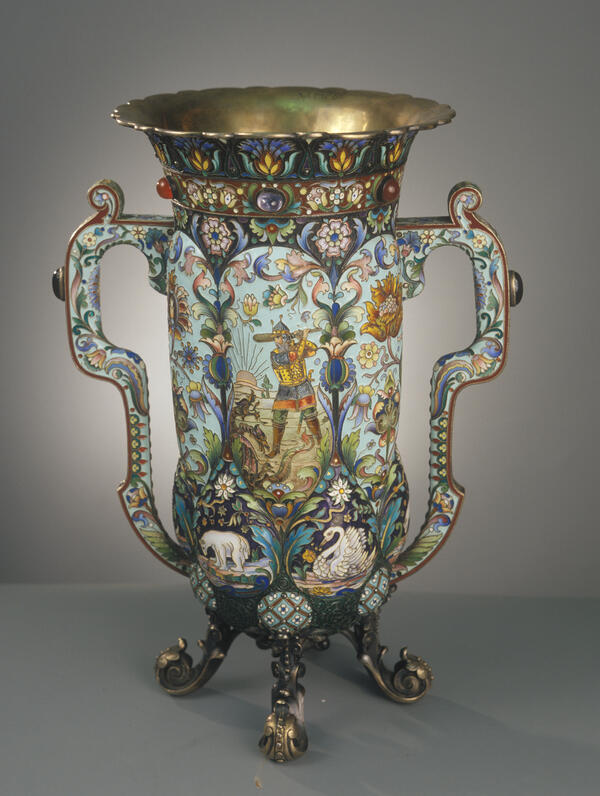Among the jewelers who worked at the end of the 19th century, one can single out Pavel Ovchinnikov, who was not inferior in popularity to Karl Faberge at that time. In 1853, when Ovchinnikov founded his own factory of gold and silver products, interest in the traditions of Russian jewelry art of Ancient Rus began to revive in Russia — coinage, niello and colored painted enamel.
Pavel Ovchinnikov was born in 1830 in the Moscow province into the family of the serfs of Prince Peter Volkonsky. At a young age, he showed the ability to draw, and to improve them he was sent to Moscow. Here Ovchinnikov, together with his brother, began to work “on a silver and divine business.” In 1853 he opened his own small workshop, and after four years he was able to free himself from serfdom and become a Moscow merchant of the 3rd guild. Gradually developing production, Ovchinnikov made his factory one of the largest jewelry firms in Moscow. By 1865, he already employed 125 people, and the company’s turnover reached 300,000 rubles. The factory was in 1st Goncharny Lane. It had stores in Moscow on Kuznetsky Most and in St. Petersburg on Bolshaya Morskaya Street.
Since 1865, Ovchinnikov took part in almost all international and all-Russian art and industrial exhibitions, invariably receiving high awards and recognition of his contemporaries. After Ovchinnikov’s death on April 7, 1888, his business was successfully continued by his sons: Mikhail, Alexander, Nikolai and Pavel. At the 1900 Paris Exhibition, the Ovchinnikov brothers were awarded the Grand Prix and a gold medal. The international jury noted “the real progress achieved by this house, the first in Russia”, as well as the “novelty of work” and the technical perfection of the company’s enamel products.
The decorative vase presented in the exhibition is made in the style of national romanticism. In the ornamental design you can see both traditional national motives and elements typical of the Art Nouveau style.
Pavel Ovchinnikov was born in 1830 in the Moscow province into the family of the serfs of Prince Peter Volkonsky. At a young age, he showed the ability to draw, and to improve them he was sent to Moscow. Here Ovchinnikov, together with his brother, began to work “on a silver and divine business.” In 1853 he opened his own small workshop, and after four years he was able to free himself from serfdom and become a Moscow merchant of the 3rd guild. Gradually developing production, Ovchinnikov made his factory one of the largest jewelry firms in Moscow. By 1865, he already employed 125 people, and the company’s turnover reached 300,000 rubles. The factory was in 1st Goncharny Lane. It had stores in Moscow on Kuznetsky Most and in St. Petersburg on Bolshaya Morskaya Street.
Since 1865, Ovchinnikov took part in almost all international and all-Russian art and industrial exhibitions, invariably receiving high awards and recognition of his contemporaries. After Ovchinnikov’s death on April 7, 1888, his business was successfully continued by his sons: Mikhail, Alexander, Nikolai and Pavel. At the 1900 Paris Exhibition, the Ovchinnikov brothers were awarded the Grand Prix and a gold medal. The international jury noted “the real progress achieved by this house, the first in Russia”, as well as the “novelty of work” and the technical perfection of the company’s enamel products.
The decorative vase presented in the exhibition is made in the style of national romanticism. In the ornamental design you can see both traditional national motives and elements typical of the Art Nouveau style.



